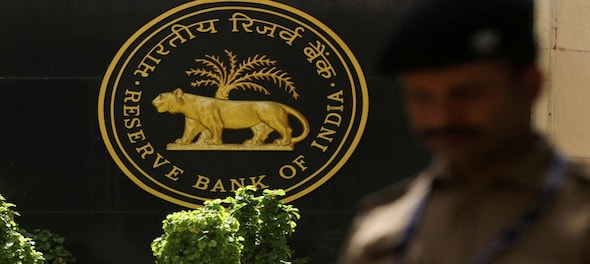
The chastening events of the 2007-08 US mortgage-loan-led bank debacles have made the accounting standard setters as well as central banks the world over to rethink the loss-recognition methodology of banks. And it triggered the thought amongst the authorities of asking banks to switch from the extant laid back, ‘incurred loss’ model to the forward-looking ‘expected loss’ model.
Back in India, the latest RBI discussion paper in this regard is a keen attempt to join the world in making this seminal switch.
As of now, banks in India have to provide for 15 percent of the secured loan that has turned non-performing asset (NPA) i.e., not serviced for the last 90 days and 25 percent of the loan if it has remained unpaid for 90 days. This is the incurred loss approach which the banking authorities the world over, including the Indian, are now seeking to junk in favour of the forward-looking expected losses approach.
Nothing wrong in this. But the devil lies proverbially in the details. Under the expected losses approach, each bank has the freedom to make its own assessment of each loan as to its repayment along with interest over the loan cycle (as against the extant one-size-fits-all or straightjacketed approach under the incurred losses model) and provide in advance for the upcoming losses with a sense of prescience. The rough formula for sizing up the impairment of the loan is the loan sanctioned along with the interest streams over the duration of the loan less the present value of the stream of EMIs or repayments.
A tall order
It is indeed a tall order because it will require all banks to have a well-staffed loan monitoring apparatus whose full time job would be to keep close and keep tabs on each loan portfolio focusing on the industry-specific problems and opportunities, company-specific problems and opportunities and all other endogenic and exogenic factors. It would be an unenviable job that would stretch the resources of banks like never before. It is certainly going to increase the interest rates maybe camouflaged as administrative fees. Trained economists don’t come cheap.
While a forward-looking dispensation is more welcome than the one that wakes you up when a crisis suddenly explodes on your face, loan monitoring team at each bank would be confronted by a whole of probabilities and uncertainties resulting in a more conservative approach to income-recognition by banks. Add to this the sick-company-rich-promoter (SCRP) syndrome, and the team’s cup of woes would overflow and spill on their tables and blotch the bank’s balance sheets like never before. The RBI discussion paper curiously doesn’t even mention the SCRP factor so rampant in India that accounts for bulk of the bad debts or NPAs.
Curious cases of defaults
It is common knowledge in banking circles as well in the commentariat that many of the classic cases of bank defaults have been through siphoning off of funds to distant foreign banks with banking secrecy laws thrown in. The tricks too are familiar and well-known-- over-invoicing of imports and kickbacks credited in such bank accounts mostly numbered or otherwise opaque, fictitious or sham consultancy fees once again often paid to the supposedly pedigreed foreign consultants who are the handmaidens of Indian company promoters etc.
The RBI discussion paper by glossing over this Indian reality, which admittedly is on the wane on the back of flurry of actions under the fabled and feared Prevention of Money Laundering Act, 2002 (PMLA), has failed to distinguish between NPAs that are rooted in economic factors and NPAs rooted in deceit and fraud. In its obsession with the economic factors, it has totally ignored NPAs springing out of deceit and fraud.
As it is, lay folks wonder if public sector banks mainly are in the most difficult business--lending despite knowing that the possibility of full repayment is suspect. Now the expected losses norms would give greater credence to this sneaking suspicion among the lay folks. They are apt to wonder why lend when it is a mug’s game because the genesis of NPA is bad or perfunctory loan appraisal.
The charges against the Yes Bank promoter that he was the lender of last resort--lending to non-credit worthy borrowers for kickbacks--bolsters the cynical view that often loans are doomed to be NPAs right at the point of sanction.
Conclusion
Quite a few banks steer clear of industrial loans and embrace retail loans including mortgage loans for buying homes. They may not find the new norms more challenging. I may conclude on a lighter note. People prebook their cars, people opt for prepaid cards. Now banks have to prebook their NPA losses so that they don’t confound the institution and their shareholders one fine morning.
Like Curate’s egg, the RBI move is good in patches.
— The author, S Murlidharan, is a CA by qualification, and writes on economic issues, fiscal and commercial laws. The views expressed are personal.
Read his previous articles here
(Edited by : C H Unnikrishnan)
Check out our in-depth Market Coverage, Business News & get real-time Stock Market Updates on CNBC-TV18. Also, Watch our channels CNBC-TV18, CNBC Awaaz and CNBC Bajar Live on-the-go!


BJP is planning to ban RSS, says Shiv Sena (UBT) chief Uddhav Thackeray
May 18, 2024 8:01 PM
Punjab Lok Sabha elections: Complete list of Congress candidates
May 18, 2024 4:08 PM
Punjab Lok Sabha elections: Check full list of AAP candidates and constituencies
May 18, 2024 12:59 PM
PM Modi, Rahul Gandhi election rallies in Delhi today: Here are the routes to avoid
May 18, 2024 11:28 AM

